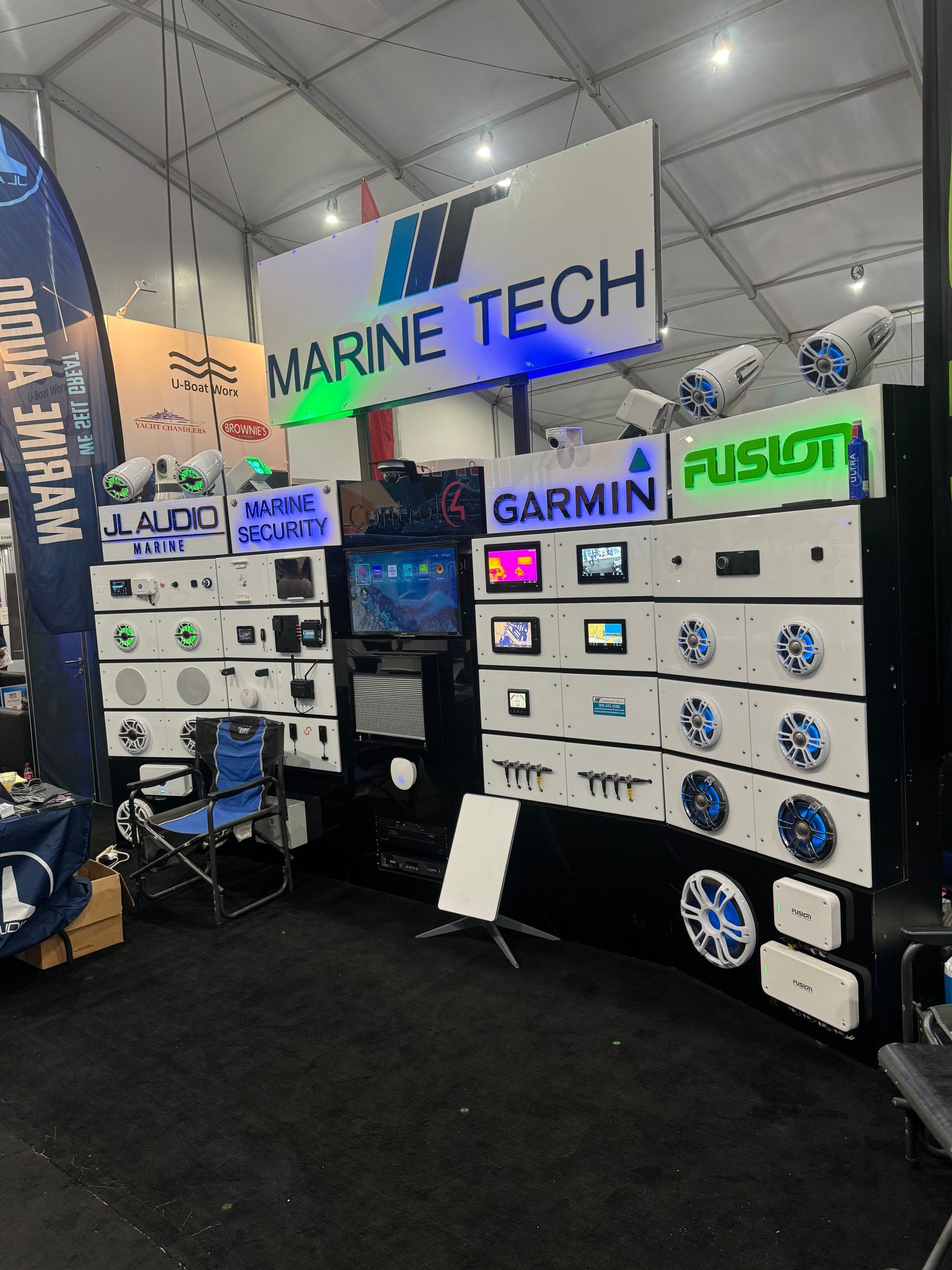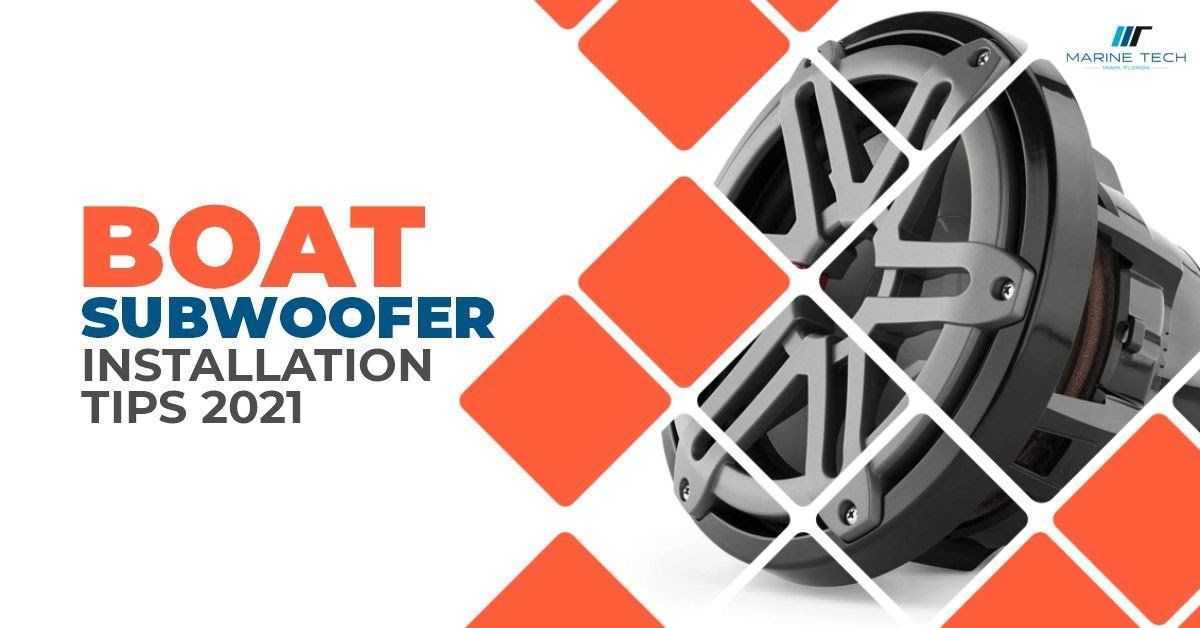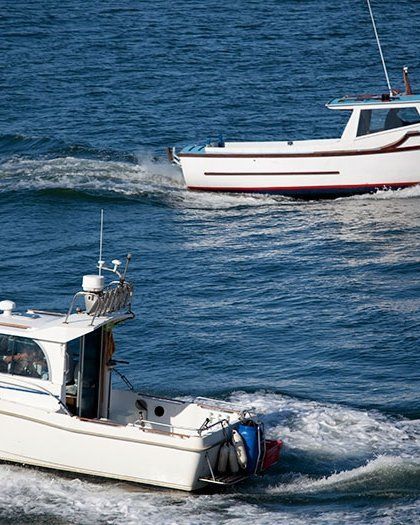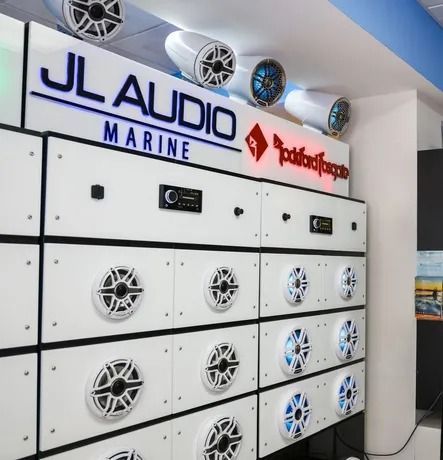Boat Subwoofer Installation Tips (2023) | Marine Tech
Music is more than just melodies and rhythms; it's a tool for catharsis, bonding, and enjoyment.
What enhances this experience is the quality of the sound system, whether it's in your home's comfort, your car's interior, or your boat's deck.
Installing a subwoofer in your boat can dramatically enrich your music experience on the water, providing those deep bass tones that standard marine speakers simply can't produce.
This article highlights tips for effectively and efficiently installing a subwoofer in your boat.
You might already have a great sound system in your boat, but you can still enhance your audio experience with subwoofers and amplifiers.
Brands like JL, Fusion offer a lot of room for expansion.
Besides that, you can pair it with amplifiers to boost the sound and create full-on party vibes.
You can get the
Subwoofer installation services to enhance your boating experience with your folks.
Subwoofer Installation Tips
You might be wondering how to install a subwoofer or where is the best place to install a subwoofer in your boat.
It depends on your boat's layout and design, but mostly it is installed underneath the helm.
Here is a complete guide to help you
install subwoofers and amps in the boat.
Step 1: Mount your Subwoofer
To start installing your subwoofer, you need to mount it at the ideal place.
Subwoofers are mostly mounted with a baffle or in a box.
However, it also depends on the boat’s dimensions, and you may end up mounting a subwoofer at a place where the box cannot be used.
If doing so, buy the specific subwoofer that is designed for that purpose.
Most subwoofers for marine are designed for baffle installations and free air mounting.
Marine subs are the favorable choice for boat installation, even if you are using a box.
It is because they are designed using water and salt-resistant materials.
The first compartment of your marine boat is an ideal place to mount the subwoofer.
You can opt for manufacturer-enclosed marine subwoofers as they are water-resistant and available in several sizes.
Step 2: Cut new holes
If you want to install a subwoofer box, you need to screw them onto the best location in your boat.
However, for flush mount subwoofers, you will either cut a new hole using a drill or use the existing holes if they can fit your subwoofer size.
If you want to cut new holes, make a hole based on the subwoofer dimension.
For example, you can use a 5-inch hole saw for smoothly-cut holes. You can further make holes for mounting screws using a hand or power drill.
Step 3: Wiring a Subwoofer
When you are wiring an unpowered subwoofer to an amp, you mostly have two choices.
You can wire the subwoofer in series or parallel. In the case of parallel, connect the positive lead of the amp with the subwoofer's positive lead.
After that, connect the negative leads of both devices.
By using parallel wiring and low impedance value, you can increase your amp’s power capability.
The other method is wire in series.
Just connect the positive lead of amps to the subwoofer positive terminal.
Then connect the negative terminal of one subwoofer to the positive terminal of the second.
After that, connect the latter subwoofer negative terminal with the amp’s negative terminal.
Lastly, connect the amplifier to the boat battery with ground wire.
In case you have a powered subwoofer, get an amp kit for ground and lead wires.
Now, run the wires to your remaining system and boat battery.
Step 4: Subwoofer Testing
The last step is to test the subwoofer as you are done with the wiring process.
Just turn on your stereo and test your subwoofer.
Make sure that everything is working correctly.
You can increase the volume to check if there is any rattling noise or other issues that can be addressed before finishing.
Always test before you put everything back so you can fix the mistakes you may have made along the way.
After that, finish up your installation and clean up the wiring so it won’t be vulnerable to water.
6 Installation Checklist
- Understanding Boat Subwoofers
Before diving into the installation process, it's essential to understand what a boat subwoofer is and what it brings to the table.
A subwoofer is a loudspeaker designed to reproduce low-pitched audio frequencies known as bass.
Unlike standard car subwoofers, marine-grade subwoofers are built to withstand harsh aquatic conditions.
They are often UV-protected, salt-fog-resistant, and water-resistant, making them ideal for boating enthusiasts looking to amplify their boats' audio system.
- Choosing the Right Subwoofer
Just like any product, not all boat subwoofers are created equal.
It's important to pick a subwoofer that fits your boat size, system power capabilities, and musical taste.
Two main types of subwoofers are available: passive and powered.
Passive subwoofers are powered by an external amplifier, making them more flexible in terms of finding the perfect match for your system's power requirements.
On the other hand, powered subwoofers have a built-in amplifier, which simplifies the installation process but requires more power and careful impedance matching.
When selecting a subwoofer, consider its power handling capabilities.
RMS power rating gives a more accurate depiction of the subwoofer's continuous power handling capability.
Furthermore, ensure that the impedance of your subwoofer matches that of your amplifier to avoid damaging your sound system.
- Location and Space Considerations
Finding the perfect place to install your boat subwoofer is crucial.
The location influences the bass quality and the subwoofer's vulnerability to water damage.
While the ideal position varies from one boat to another, useful spots could be under the seats, the cockpit, or the helm station.
Ensure to check the available space and compare it with the subwoofer's dimensions before making a purchase.
Choosing a suitable enclosure for your subwoofer is also significant.
Sealed enclosures are great for tight, accurate bass, while ported and bandpass enclosures can provide more boom and loudness.
Your choice would depend on your musical taste and the amount of space available.
- Correct Wiring
Only use marine-grade wiring for your boat's subwoofer installation.
This type of wiring is specially designed to resist damage from water, salt, and UV exposure.
Furthermore, confirm you connect the wires to the right terminals.
Be sure to match the positive wire to the positive terminal and the negative wire to the negative terminal.
Use the correct gauge of speaker wire based on the power and impedance of your subwoofer.
Incorrect gauges can result in low-quality sound output and possible damage to your equipment.
- Avoiding Noise Interference
The marine environment can be pretty noisy - the engine's roar, wind, and water splashes can significantly drown your music.
Hence, it's important to have a subwoofer that can compete with these noises.
However, remember that the loudness level should not compromise the sound quality.
- Regular Testing and Maintenance
Once the subwoofer is installed, regular testing is vital to ensure the sound quality is maintained.
Always check for any rattles or distortion that could indicate a problem.
Regularly clean and dust off your subwoofers to avoid buildup that could affect the speaker's performance.
Pontoon boat subwoofer installation
For pontoon boat subwoofer install, you need few options for mounting or installing.
You can use a baffle or inside of a box to install subwoofers.
However, these boats are designed in a way that you may not find a place where you can fit a box.
Additionally, you can use marine subwoofers as they are water and salt-resistant.
When you install a subwoofer in your pontoon box, make sure to build a box to mount it in.
It will help insulate and keep it dry.
You can use an MDF wooden box and then further coat it by spraying Rhino liner.
Apply multiple coats to make it hard.
After that, you can follow the wiring process as it is the same as subwoofer installation in other boats.
After the wiring test, your subwoofers and you are all ready to enjoy music in your boat.
FAQs
Wrapping up
Installing a subwoofer on your boat can make a massive difference to your on-water music experience.
It provides those much-coveted deep bass tones essential for a rich and immersive sound output.
However, to ensure you get the best bass response and longevity out of your marine subwoofer, correct installation is paramount.
Consider factors such as the right subwoofer type, power handling, impedance, wiring, location, and space before installation.
Periodic tests and maintenance should also be part of your boat subwoofer's lifespan to maintain peak performance and sound quality.
With all the steps mentioned above, you can easily install a subwoofer on your boat in no time.
Before you start installing anything on your boat, make sure to understand your boat, as all boats are not the same.
It depends on which marine subwoofers are best for you.
You can also hire professionals for subwoofers and amp installation.
At marine tech Miami, we offer professional
subwoofer installation services, and we use the best brands products like JL audio, Fusion, and Clarion to install in your boat.
Contact Us
Contact Us
Recent Posts

CONTACT US
Looking to upgrade your marine electronics?
With more than 25 years of experience, we can help you get started today!




